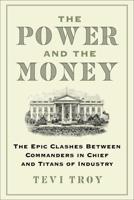Publisher's Synopsis
Through U.S. President Franklin D. Roosevelt's Lend-Lease program, American leaders sought to keep Joseph Stalin's Red Army in the field and fighting Adolf Hitler's forces in the Second World War from 1941 forward. Delivered by the Anglo-American Arctic naval convoys, overland through the Iranian deserts and mountains, and through the skies from Alaska to Siberia, this much-needed material aid helped Stalin's Red Army to continue fighting and thereby prevented a separate peace with Hitler's Germany and a mechanized repeat of the First World War's Brest-Litovsk fiasco. Yet Roosevelt and other U.S. officials, due to their severe underestimation of Stalin's character and his rigid and fanatical devotion to exporting Communism at gunpoint, gambled incorrectly that they could win the Soviet premier's heart and mind through several excessive wartime aid gestures, including the furnishing of atomic bomb materials to the Soviet regime. By 1945, American leaders had succeeded in their strategic goal of keeping Stalin and his Red Army in the war and hastening victory but failed in their efforts to purchase the Soviet premier's goodwill and commitment to postwar peace, heralding the global Cold War, and setting the stage for later U.S. martial aid programs to those resisting aggression abroad. In addition to its primary focus on the American leadership's perceptions of Stalin's strategic importance to the Allied war effort in the Second World War, this work also includes a detailed assessment of Roosevelt's Soviet Lend-Lease program alongside U.S. President Ronald Reagan's later support for the Afghan Islamic guerrillas resisting Soviet occupation during the Soviet-Afghan War of the 1980s and a comparison of both martial aid programs with Washington's recent revival of Lend-Lease aid for the Ukrainian war effort. It offers today's American leaders and policymakers a chance to consult the lessons of history and apply them in the present.








